The project of the Barys armored personnel carrier (Kazakhstan / South Africa / Russia)
Based on the desire to re-equip the ground forces, some time ago, Kazakhstan began to search for promising technology that could replace existing samples. Due to the lack of experience in creating armored vehicles, it was decided to turn to foreign companies for help of this kind. It was assumed that the new equipment for the army will be built on a foreign project, modified in accordance with the requirements of the customer. According to the results of the study of proposals available on the international market of armaments and equipment, the potential customer represented by Kazakhstan chose the Republic of South Africa and Russia as the project executors.
As a basis for a promising model of technology, it was proposed to use the latest development of the Paramount Group company - the chassis called Mbombe 8. It was also planned to involve in the project the Russian Central Research Institute "Burevestnik", which is part of the corporation "Uralvagonzavod." The task of the Russian side in the framework of the new project was to provide a ready-made combat module with the required characteristics. A promising model of equipment, consisting of components of foreign development, received a new designation "Barys".
According to the available data, foreign engineering equipment will be mass-produced in the future by the industry of the customer's country. Production of armored vehicles is planned to be launched at the Kazakhstan Paramount Engineering plant. This plant is a joint venture of Paramount Group and Kazakhstan Engineering Distribution. The production organization was founded specifically for the assembly of promising models of armored vehicles created in the framework of joint projects.
By the summer of this year, the organizations involved in the Barys project had completed the main design work and also produced a prototype of a promising armored vehicle. In early June, this model was one of the main exhibits of the exhibition of weapons and equipment KADEX-2016. During this exhibition, some interesting statements were made. Thus, the Deputy Minister of Defense of Kazakhstan, Lieutenant-General Okas Saparov said that before the end of this year it is planned to transfer the first production batch of new equipment to the troops. Also at the beginning of the summer it was mentioned that the promising armored vehicle had not yet been tested at the landfills of Kazakhstan.
In June, there were also other reports on the progress of the new joint project. It was mentioned that the combat module AU-220М “Baikal” of Russian production proposed for use on the Bary “Barys” has not yet been integrated into the onboard equipment. It takes some time to carry out the required work. There were also reports of plans to equip a certain amount of equipment with other weapons. In this case, it was a question of a remotely controlled combat module with machine-gun armament, created and produced by the Turkish company Aselsan.
Three months after the "premiere," the promising joint-development armored personnel carrier again became an exhibition copy. Now a sample of the new technology was delivered to Kubinka near Moscow to participate in the Army-2016 international military-technical forum. At this event, Kazakhstan presented several of its newest vehicles, one of which was the Barys wheeled armored personnel carrier. It is curious that, unlike KADEX-2016, the prototype was shown on Army 2016 with the stern ramp lowered, thanks to which everyone who wanted was able to see the car for the first time not only from the outside, but also from the inside.
According to reports, a certain interest in the context of the project "Barys" is story The chassis, originally named Mbombe 8. Since the beginning of this decade, the South African company Paramount Group has been promoting the Mbombe 6 armored vehicle on the international market for weapons and equipment. It was an attempt to combine in one project an armored personnel carrier with a wheel formula 6х6 and an MRAP vehicle. In its original form, Mbombe-6 could not completely satisfy all customers, which is why the development of another version of the project began. The result of the new work was the appearance of a chassis with the formula 8х8 and a characteristic appearance for modern armored vehicles. Such a machine, which received the initial designation Mbombe 8, became the basis for Barys.
One of the main tasks of the new project was to protect the crew and internal units of the vehicle from various threats in the form of small weapons or explosive devices. In this regard, the hull design uses ballistic and mine protection with the required indicators. According to the developer, the bulletproof armored hull conforms to the 3 level of the NATO standard STANAG 4569. This allows you to protect the crew and troops from 7,62-mm armor-piercing bullets. If necessary, and at the request of the customer, the protection of the case can be enhanced by additional mounted modules.
In case of explosion of explosive devices under the wheel or the bottom of the hull, in the design of the Mbombe 8 / Barys BTR, some measures are taken to reduce the negative impact of the explosion energy. Thus, the bottom of the case provides protection for the 4b level (10 kg of TNT under the wheel or bottom). In addition, the crew and landing forces receive seats that absorb some of the energy and thereby reduce the impact of the explosion, reducing the likelihood of injury or death of the crew.
The car of the new type has received the case of a design traditional for last decades. A large inclined upper frontal part is provided, which at the bottom is associated with a wedge-shaped unit, which is connected to the inclined lower frontal sheet. The case has developed on-board niches, most of which are given for the placement of numerous boxes for various property. The roof of the hull is made horizontal with small sloping areas at the sides. Bottom - V-shaped, due to the requirements for strengthening mine protection. The hull feed consists of two main sheets with an inclined bottom.
The layout of the body of the armored personnel carrier "Barys" is determined in accordance with current trends in the construction of armored vehicles. The front of the case is given under the placement of the engine and the main transmission units. Other nodes of the latter are placed in the lower part of the body, under the floor of the habitable compartment. Directly behind the engine compartment is placed the control compartment, designed for the crew. Behind him are chairs for the landing. The combat compartment, fenced off from other volumes, is not envisaged by the project, which is connected with the design of the combat modules proposed for use. In addition, the department of control is actually in the same volume with the landing, any partitions are not provided.
In the engine compartment of the hull fits a hp 500 diesel engine. The engine is connected to an automatic transmission, which, along with the rest of the transmission units, transmits torque to all eight driving wheels. It is alleged that with the help of such a power plant the armored personnel carrier can reach speeds up to 110 km / h on the highway, and the cruising range will reach 800 km. The type of suspension has not yet been clarified. As part of the chassis used wheels with tires type 16.00R20. There is a centralized paging system. The undercarriage should provide a turn with a radius of no more than 24 m, and also allow climbing walls up to 600 mm. The width of the trench to be overcome can reach 2 m. There is a possibility of crossing water barriers on fords up to 0,9 m in depth. The machine cannot swim.
The prototype BAR "Barys" shown at two exhibitions was equipped with a prototype model of the combat module AU-220M "Baikal". This system was developed by the Russian Petrel Research Institute "Burevestnik" with the aim of arming domestic or foreign combat vehicles of various types. "Baikal" is a combat module with powerful weapons and a set of necessary electronics, mounted on the body of any compatible machine. An important feature of this development is the placement of all units outside the internal volume of the body, which simplifies the development or modernization of the carrier technology of such systems.
All main units of the AU-220M module are placed in a protected housing formed by several parts. As the main support device, a casing of a shape close to cylindrical is used. Boxed covers of weapons, optoelectronic equipment, etc. are placed on it. On the central rocking installation, the peel is attached to the 57-mm automatic gun. A rifle caliber machine gun is also connected to its pointing drives. The design of the combat module provides a round-trip horizontally and shelling targets in the vertical sector from -5 ° to + 60 °. The main gun of “Baikal” is capable of making up to 120 rounds per minute using various types of ammunition. Ammunition can contain up to 200 shells. Depending on the type of ammunition used and the target, the AU-220М module can attack targets at ranges up to 10-12 km. To combat unprotected targets at smaller distances, it is proposed to use a PKT machine gun with 2000 rounds of ammunition. The module also carries several smoke grenade launchers.
The possibility of equipping some of the serial armored personnel carriers with combat modules with machine guns was mentioned. However, only a possible supplier of such systems was named, due to which the determination of the characteristics and potential of such systems, for objective reasons, is impossible. In this context, one can only speculate about the plans of the armed forces of Kazakhstan concerning the procurement of several modifications of equipment with different combat qualities and, as a result, with differing costs.
According to the published data, the crew of two or three people should manage the armored personnel carrier of the new model. Their jobs are placed in the front of the habitable volume and equipped with a set of all necessary equipment. For greater convenience of work, the two front workplaces are equipped with small logging with periscopic viewing devices. In this case, the driver of the car has controls for driving, and there are other devices in the field of the commander and gunner operator. In particular, they are encouraged to use monitors to receive the video signal of optical-electronic systems and remote control weapons. It is interesting that the monitor can also be used by the driver: an additional video camera is provided on the stern of the roof, which can be used to monitor the situation when driving or maneuvering.
The central and aft parts of the habitable volume are given under the troop compartment. At the sides are placed on four folding seats with a set of seat belts. It is alleged that the design of these devices is designed to protect the landing against the explosion of explosive devices under the armored vehicle. The placement of the landing along the sides did not allow to equip the body of the car with embrasures for firing personal weapons. The habitable compartment of the car, for safety, and also for additional convenience of trips and combat work, is equipped with means of protection against weapons of mass destruction and has air conditioning. The latter is necessary due to the climatic features of South Africa and Kazakhstan.
The crew and the landing should get to their places through several hatches in different parts of the hull. The roof of the department of management has its own hatches, allowing the crew to get to workplaces "through the top." The main means of landing is dropping a stern ramp with a mechanical drive. Also, the landing if necessary, can use a small hatch in the ramp or leave the car through two hatches in the aft of the roof. For more convenient use of the hatches, the hull is equipped with the appropriate details. So, on the sides of the front of the machine there is a set of folding footrests, and to the right of the aft door there is a full-fledged ladder of small height.
The Barys BTR has a total length of 8 m, width of 2,8 m and height (on the hull roof) - 2,4 m. Installing the Baikal combat module adds about 1,3 m to the height. According to the developer, its normal value can vary from 19 to 28 t, depending on the list of additional equipment, reservations, type of combat module, etc. The landing gear payload, including landing, armament and ammunition, is 9 t.
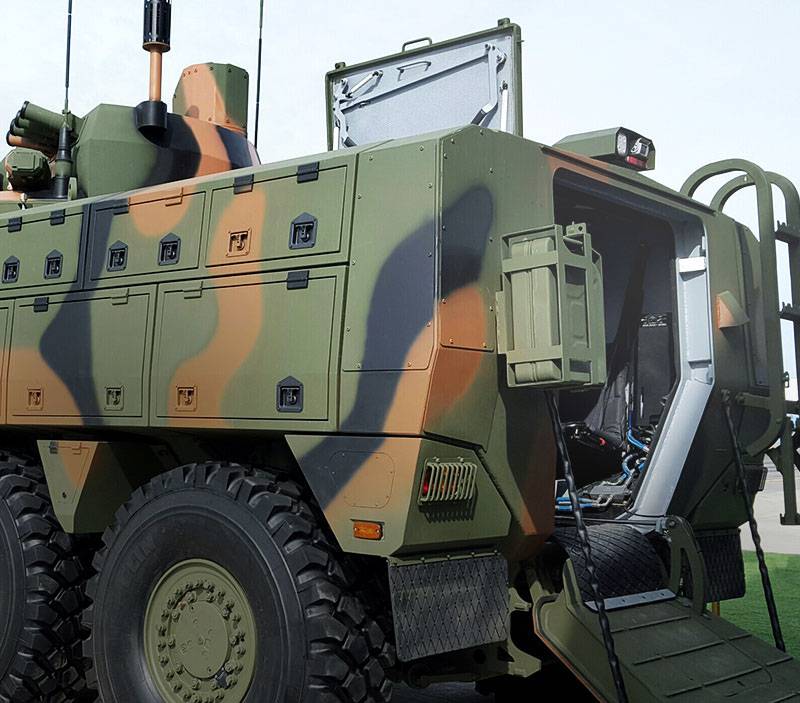
Aft hull with open hatch and ramp. Photo Paramountgroup.com
To date, the Barys armored personnel carrier exists in the form of at least one prototype. This car for the last few months twice shown at exhibitions of weapons and equipment. It is likely that in the future it will again become an exhibit of new exhibitions, designed to show the success of industry and the armed forces of Kazakhstan. In addition, in the foreseeable future, the Mbombe 8 / Barys equipment should go into series with the subsequent supply of army ready vehicles. According to recent optimistic estimates of official Astana, by the end of this year, the armed forces will be able to receive the first production batch of new armored personnel carriers.
However, before the start of serial production, the authors of the project from three countries have to solve a number of critical tasks. It is necessary to test the experimental equipment in conditions as close as possible to future actual operation in the troops, complete the integration of the Baikal combat module with the existing chassis, and then check the result of such work, and also, if necessary, make certain adjustments to the design of the equipment with aim of achieving the required characteristics. All this work will take at least several months. In the light of information, according to which, as of the beginning of summer, Barys has not yet come to the test in Kazakhstan, the possibility of the rapid deployment of mass production may raise some doubts.
In the proposed form, the promising wheeled armored personnel carrier Barys may indeed be of interest to the armed forces of different countries, the first of which was the army of Kazakhstan. Specialists from Kazakhstan, South Africa and Russia proposed the original look of a new armored vehicle capable of transporting personnel, protecting it from various threats, as well as fulfilling the tasks of fire support and the destruction of various targets. Due to the use of individual ideas and solutions, as well as the use of some components of the new model of armored vehicles for one or another of the characteristics may favorably differ from other modern developments in its class.
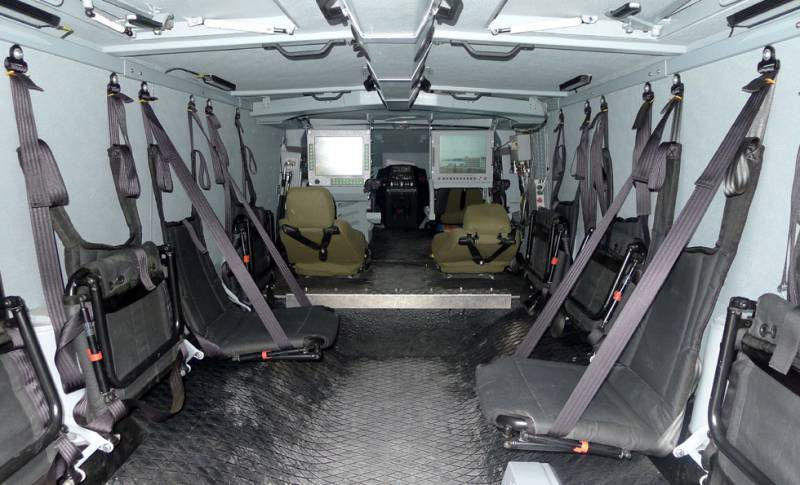
Inhabited hull compartment: troop compartment and control compartment. Photo Vikond65.livejournal.com
The most interesting features of the Barys project, which can have a great impact on its commercial prospects, are the existing level of protection and firepower. Without using additional booking, the vehicle is able to protect the crew from armor-piercing rifle bullets. The use of mounted modules, in turn, will lead to an additional increase in the level of protection. Perhaps with their help, frontal projection can be protected even from small-caliber artillery. In addition, the mine protection used, corresponding to the level 4b of standard STANAG 4569, is of great importance.
Of particular interest is the armament of an armored personnel carrier. "Barys" was one of the first models of armored vehicles that received the combat module AU-220M of the Russian design. This system carries an automatic 57 caliber mm gun, which, according to the developers, should give the car significant advantages over other modern armored vehicles with smaller caliber weapons. Increased indicators of the muzzle energy and power of 57-mm projectiles in the future will allow carriers of "Baikal" to fight with different models of armored vehicles, not approaching them at a distance of effective return fire.
The first customer of the Barys armored personnel carrier should be the armed forces of Kazakhstan, on whose order this sample was created. In the future, such equipment can be exported, which will contribute to the high design characteristics. Nevertheless, the real export development prospects are still in question. The company Paramount Group from South Africa focuses on the international market, but bringing a promising machine to it requires taking into account the opinions and capabilities of other project participants. Confirmed information about plans to sell new armored vehicles to third countries has not yet been received.
To date, a promising armored personnel carrier, created in the framework of the cooperation of the three countries, exists only in the form of an experienced vehicle, which will have to go to the test and show its capabilities. To conduct all the necessary tests, refinements, etc. take some time. In this case, the customer hopes to receive the first production batch of BTR Mbombe 8 / Barys before the end of this year. Whether the project will be able to justify the hopes placed on it and meet the deadlines will be known in the near future. Thanks to this, already at the beginning of next year, it will be possible to talk about the success of certain works under the new project.
On the materials of the sites:
https://lenta.ru/
http://burevestnik.com/
http://paramountgroup.com/
http://nevskii-bastion.ru/
http://army-technology.com/
http://bmpd.livejournal.com/
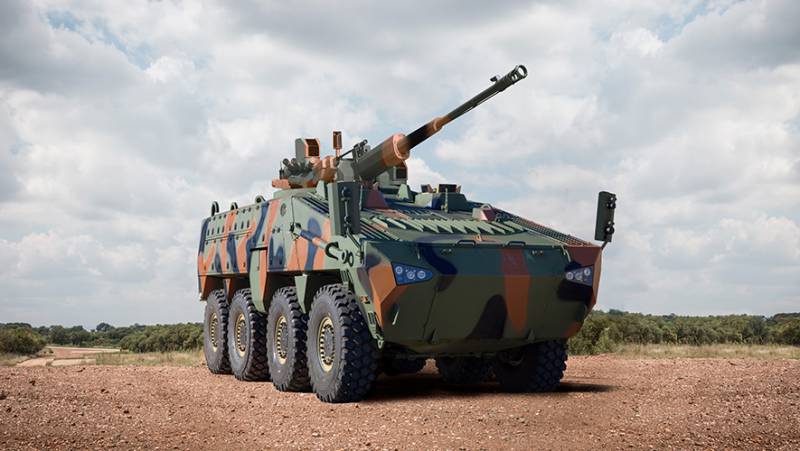
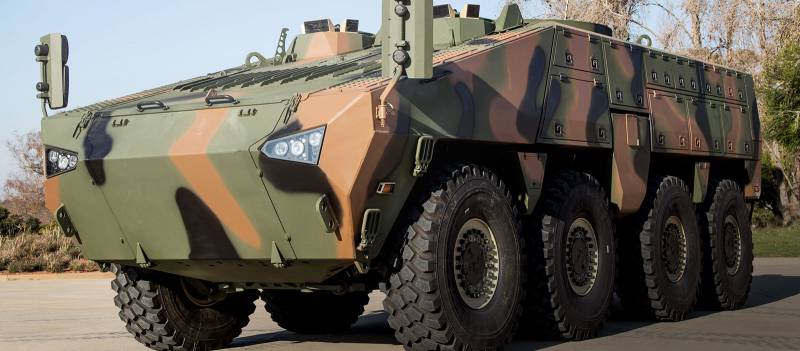
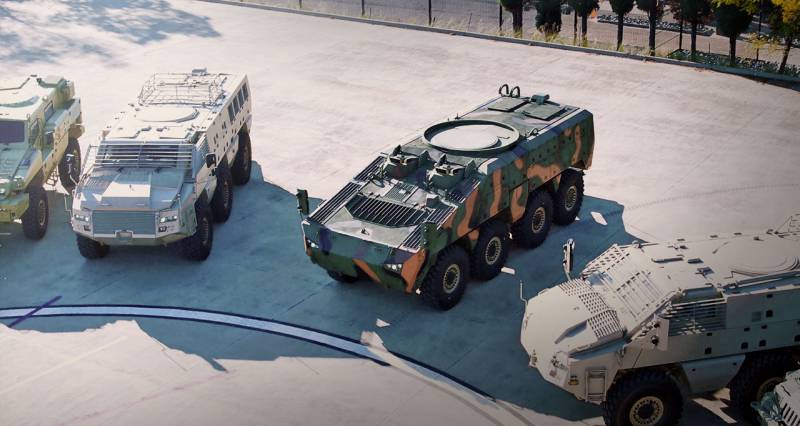
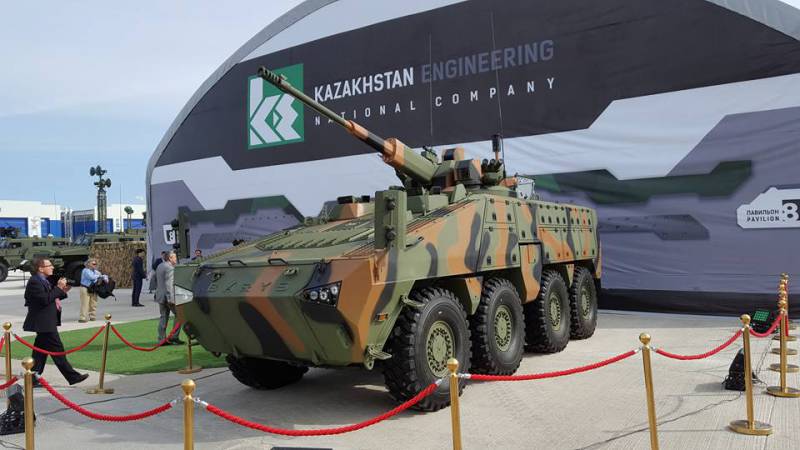
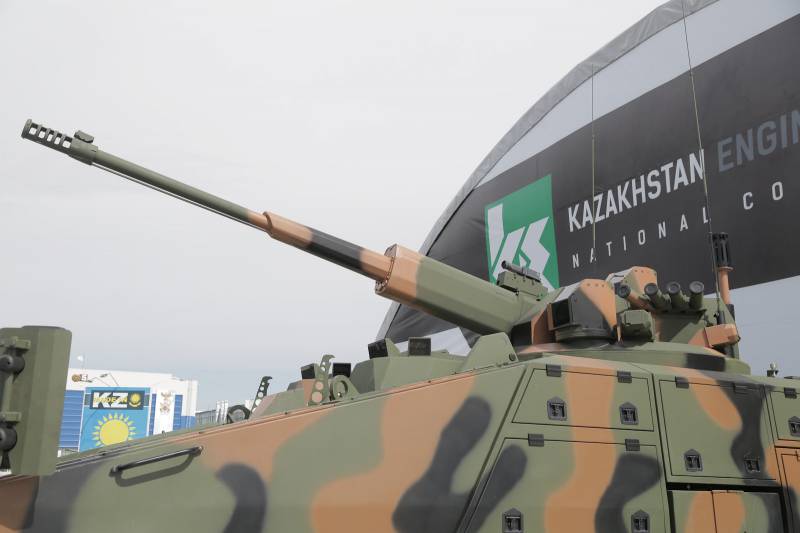
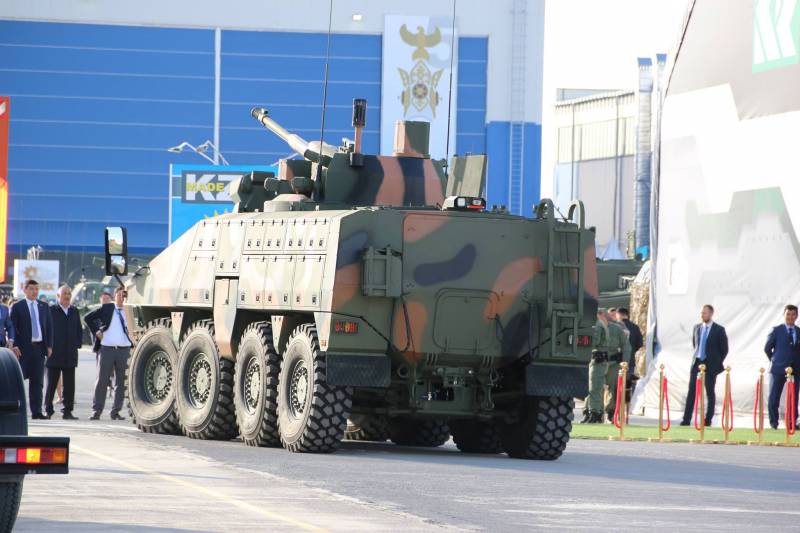
Information